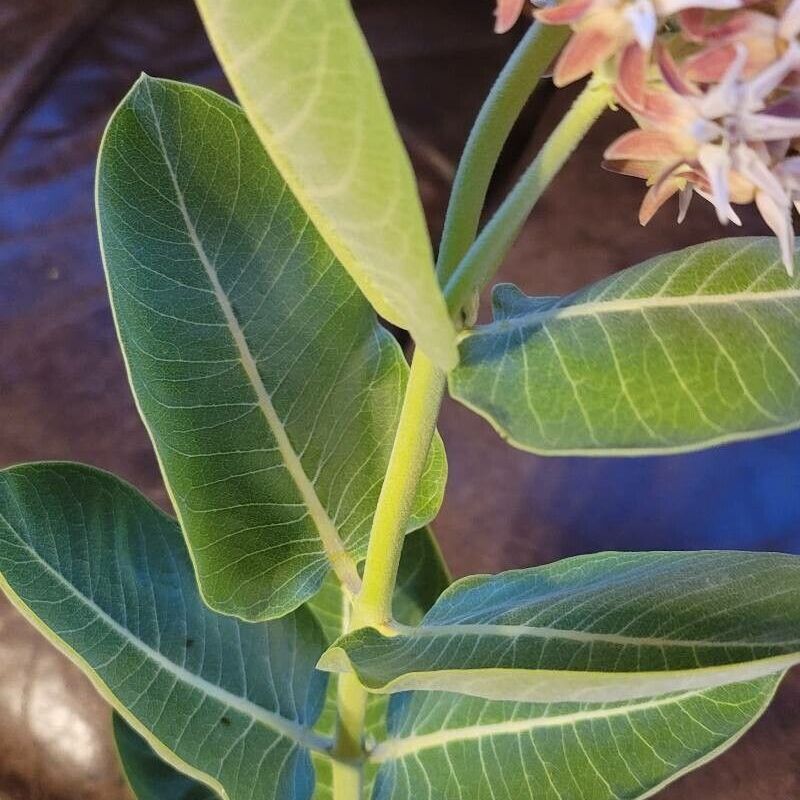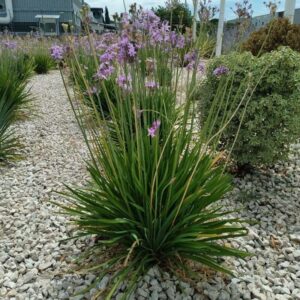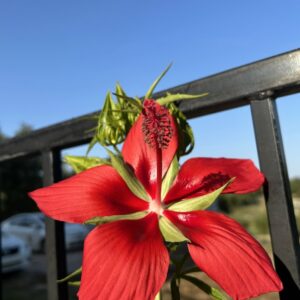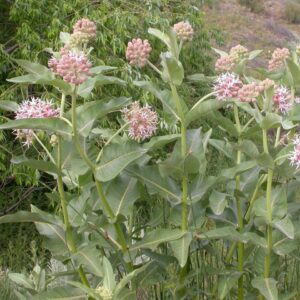Showy Milkweed – Asclepias speciosa
Overview: Showy Milkweed, scientifically known as Asclepias speciosa, is a perennial herb native to western North America. It is a vital plant for pollinators, particularly monarch butterflies, as it serves as a host plant for their larvae. Showy Milkweed is distinguished by its clusters of fragrant pink to purplish flowers and its large, lance-shaped leaves. It is valued not only for its ecological importance but also for its ornamental value in gardens and natural landscapes.
Typical Uses:
Showy Milkweed serves various purposes in garden and landscape design:
- As a pollinator-friendly plant in wildlife gardens and butterfly habitats, attracting monarchs, bees, and other beneficial insects
- In native plant gardens and naturalized areas, contributing to biodiversity and ecosystem health
- In perennial borders and mixed plantings, providing color, texture, and fragrance
- As a cut flower in bouquets and floral arrangements, adding a touch of the wild to indoor spaces
Establishment and Care Instructions:
Planting: Choose a site with well-drained soil and full sun. Sow seeds directly in the garden in the fall or early spring, or transplant seedlings. Space plants about 12 to 18 inches apart to allow for spreading.
Watering: Water regularly during the first growing season to help the plants establish. Once established, Showy Milkweed is drought-tolerant and only requires supplemental watering during prolonged dry periods.
Pruning: Deadhead spent flowers to promote continuous blooming and prevent self-seeding if desired. Cut back stems to the ground in late fall or early spring to rejuvenate the plant and remove old growth.
Fertilizing: Showy Milkweed typically does not require fertilization. If soil fertility is poor, apply a light application of balanced fertilizer in spring.
Special Features and Usage:
Showy Milkweed offers several distinctive features:
- Flowers: Clusters of fragrant pink to purplish flowers bloom from late spring to early summer, attracting a variety of pollinators.
- Foliage: Large, lance-shaped leaves provide a lush backdrop for the flowers and add texture to the garden.
- Ecological Importance: As a host plant for monarch butterflies, Showy Milkweed plays a crucial role in their life cycle, supporting monarch populations and contributing to their conservation.
- Drought Tolerance: Once established, Showy Milkweed is highly drought-tolerant, making it suitable for low-water landscapes.
- Low Maintenance: Requires minimal care once established, including occasional deadheading and cutting back in late fall or early spring.
- Deer Resistance: Showy Milkweed is resistant to deer browsing, making it a suitable choice for gardens prone to deer damage.
- Nectar Source: In addition to monarchs, Showy Milkweed attracts a variety of other pollinators, including bees, butterflies, and hummingbirds, providing a valuable food source.









Reviews
There are no reviews yet.